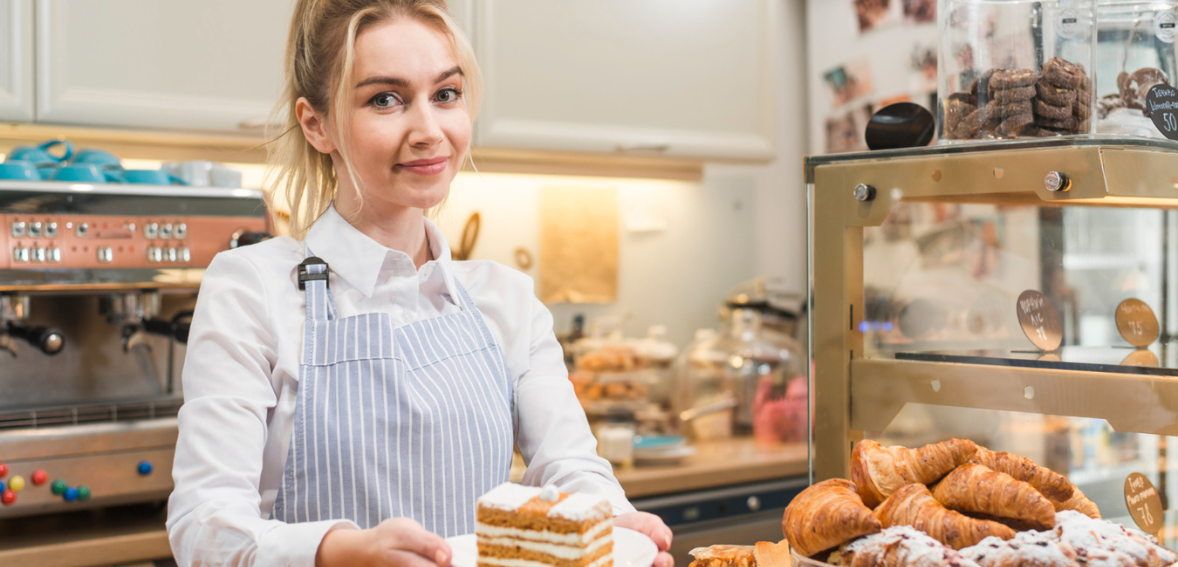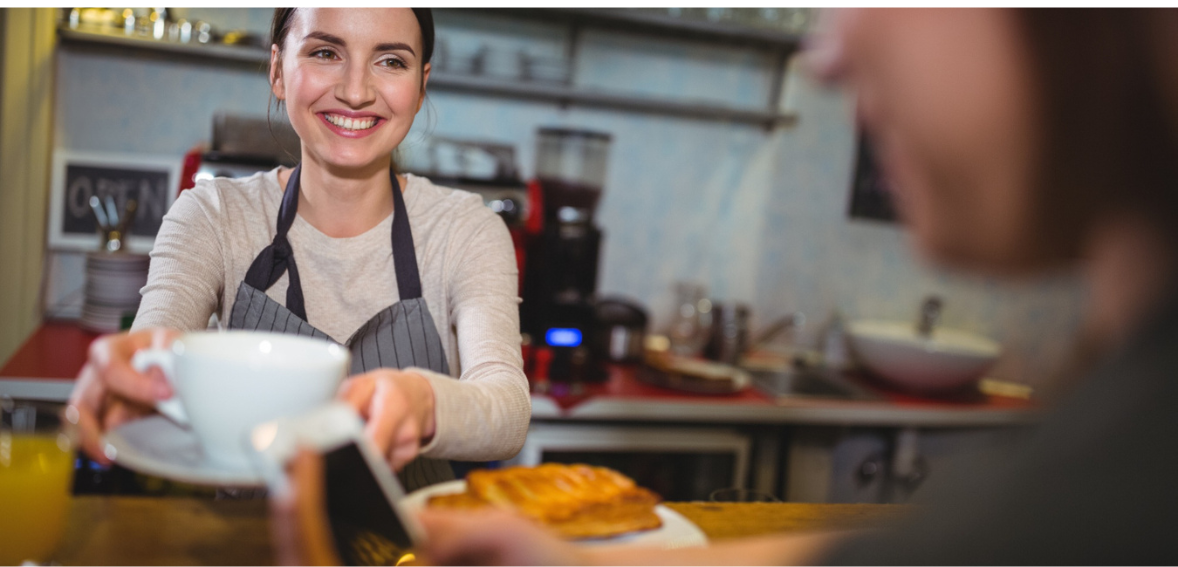
By Bella Zhang August 18, 2025
Over the past few years, bakeries have undergone significant changes in how they interact with customers and process transactions. With health and safety becoming top priorities, many bakeries are embracing modern payment technologies to ensure smooth and hygienic transactions. The move towards contactless bakery payments is not only a response to hygiene concerns but also a way to improve customer satisfaction and boost sales. Free card machines, often provided by payment service providers, are playing a key role in this transition, making it easier for bakeries to accept tap-to-pay methods without a large upfront investment. By reducing cash handling and offering faster payment processing, these systems are reshaping how bakeries do business while creating a safer environment for customers and staff alike.
The Growing Role of Contactless Payments in Bakeries
Contactless payments in bakeries are driven by convenience, hygiene and changing customer habits. More customers are used to using their smartphones, smartwatches or contactless cards for quick transactions. By introducing tap to pay bakery systems, bakeries can keep up with these changing habits. This reduces queues, eliminates the need for customers to hand over cash and supports better hygiene. It also allows bakeries to serve more customers during peak hours without compromising on service. For small bakeries the free card machines means the barrier to entry for this technology is lower and even the smallest of operations can keep up with payment trends without breaking the bank.
How Free Card Machines Encourage Adoption
Cost is often a barrier for small businesses looking to upgrade payment systems. Free card machine offers are making it easier for bakeries to transition to contactless bakery payments without worrying about upfront expenses. These machines are typically offered by payment processors in exchange for small transaction fees, which are often outweighed by the increased sales volume and faster service times. The ability to accept contactless payments not only improves customer convenience but also helps bakeries attract younger, tech-savvy customers who expect modern payment options. Over time, these systems can help bakeries streamline cash flow management and reduce the risk of errors associated with manual cash handling.
Contactless Payments and Hygiene Standards
Hygiene is key in the food industry and bakeries are no exception. Cash transactions involve lots of hand to surface contact so the risk of germ spread is high. By using bakery hygiene tools like contactless payment terminals bakeries can reduce this risk. Customers can simply tap their card or device, minimizing touchpoints during transactions. This small but important change will help build customer confidence, show the bakery cares about their health and wellbeing. Along with other hygiene measures like sanitising workspaces and using barriers, contactless payment systems are a big part of creating a cleaner, safer shopping experience.
Improving Speed and Efficiency in Service
In busy bakeries, speed of service can make the difference between satisfied customers and lost sales. Contactless systems enable faster transactions, as customers no longer need to enter a PIN for smaller purchases or wait for cash change. This is especially valuable during peak hours when lines are long and customers are in a hurry. By integrating tap-to-pay bakery technology, staff can process more orders in less time, leading to increased throughput and higher daily sales. The free card machine programs often come with easy-to-use interfaces, making it simple for staff to learn and operate the system effectively.
Meeting Changing Consumer Expectations
Today’s customers want convenience, speed and safety when buying. Many have gone cashless and expect businesses to offer contactless options. Bakeries that don’t offer contactless bakery payments will lose customers to competitors who do. By installing free card machines, bakeries show they are forward thinking and customer focused. This will lead to repeat visits and word of mouth, both of which are vital for small businesses. Contactless payments also align with wider trends in retail and hospitality, keeping bakeries relevant in a digital world.
Integrating Contactless Payments with Loyalty Programs
Free card machines not only enable payments but also open up the opportunity to integrate loyalty programs into the checkout process. Many modern payment systems allow customers to earn points or rewards automatically when they pay, without the need for separate cards or apps. This means bakeries can strengthen customer relationships and encourage repeat business. By combining bakery hygiene tools with a digital rewards system, bakeries can offer safety and added value, making every visit more rewarding for the customer.
Security Benefits for Bakeries and Customers
One of the advantages of contactless payment systems is the enhanced security they provide. Tap-to-pay methods use encryption and tokenization to protect payment data, reducing the risk of fraud. For bakeries, this means fewer chargeback disputes and greater trust from customers. Free card machines that support tap-to-pay bakery transactions are typically compliant with modern payment security standards, ensuring that both the business and the customer benefit from a safer transaction process. This level of protection adds another layer of value beyond hygiene and speed.
Reducing Operational Costs Over Time
While free card machines save upfront costs, the benefits stretch into long term operational savings. Handling cash incurs costs of counting, storing and depositing money. By moving more transactions to contactless bakery payments, bakeries can reduce time spent on cash handling and risk of loss or theft. This means staff can focus more on customer service and product preparation and overall customer experience. Plus digital transaction records make bookkeeping simpler and more accurate.
Supporting Sales Growth Through Upselling
Contactless makes it easier to upsell at the point of sale. With quick transaction times staff can offer add-ons or limited time offers without slowing down service. The convenience of tap to pay often encourages customers to make impulse purchases, increasing average transaction values. For bakeries combining bakery hygiene tools with a well trained sales approach can mean better hygiene and stronger sales performance.
Preparing for the Future of Payments
Payment technology is moving fast and bakeries that invest in contactless now will be better prepared for the future. As mobile wallets and wearable payment devices become more common, having a tap to pay at a bakery means you can accept a wide range of payment methods. Free card machines that support these technologies mean you can adapt without extra cost. Staying ahead of the payment curve means customer satisfaction and competitiveness in the market.
Building Customer Trust Through Transparency
When bakeries adopt contactless bakery payments, they send a clear message about their commitment to safety, hygiene, and customer care. Transparency about hygiene measures, including payment options, can help build trust. Displaying clear signage about contactless options and hygiene protocols reassures customers that the bakery is taking proactive steps to protect them. This trust can translate into customer loyalty, which is invaluable in a competitive food service industry.
Enhancing Brand Image with Modern Technology
Using modern payment solutions can also enhance a bakery’s brand image. Offering bakery hygiene tools alongside digital ordering, social media engagement, and online promotions creates a cohesive, modern experience for customers. Free card machines help level the playing field, allowing small, independent bakeries to offer the same seamless payment experience as larger chains. This can attract new customers who appreciate the combination of tradition in baked goods with innovation in service.

Training Bakery Staff for Contactless Payment Efficiency
The successful adoption of contactless bakery payments depends heavily on how well bakery staff are trained to use the technology. While free card machines are generally designed to be simple and user-friendly, staff must be comfortable with the process to ensure transactions run smoothly, even during the busiest times of the day. Training should include how to process both card and mobile payments, troubleshoot minor issues, and explain the benefits of tap-to-pay to customers.
Staff should also understand how these systems integrate with point-of-sale software, ensuring orders are recorded accurately and inventory tracking remains reliable. By making training part of onboarding and conducting occasional refreshers, bakeries can maintain high standards of service while fully leveraging their bakery hygiene tools. A confident team helps build customer trust, reduces delays at the counter, and ensures that the bakery’s investment in new payment methods translates into better efficiency and improved sales performance over time.
Marketing the Shift to Contactless to Attract More Customers
Switching to tap-to-pay bakery systems is an improvement that should be communicated to customers, not just implemented silently. Many customers choose where to shop based on convenience, safety, and speed. By promoting the adoption of contactless payments through window signage, social media posts, and in-store displays, bakeries can position themselves as modern, customer-focused businesses. Highlighting benefits such as reduced waiting times, improved hygiene, and compatibility with mobile wallets can make the bakery more appealing, especially to younger and health-conscious audiences.
Some bakeries may even launch special promotions encouraging customers to try contactless payments, further driving adoption. When combined with visuals of the hygienic process and a friendly explanation from staff, this marketing approach reassures customers about safety while reinforcing the bakery’s commitment to meeting modern expectations. Over time, consistent messaging can help build a reputation for being forward-thinking, which not only draws in new visitors but also encourages repeat business.
Adapting Contactless Payments for Outdoor and Event Sales
For bakeries that participate in farmers’ markets, community fairs, or special events, having a portable contactless bakery payments solution is essential. Free card machines designed for mobile use allow bakeries to accept tap-to-pay transactions anywhere, removing the need to handle large amounts of cash on the go. This flexibility can increase sales opportunities, as customers are more likely to make impulse purchases when they can pay easily without needing exact change. Additionally, portable contactless payment devices help maintain hygiene standards in outdoor settings, where handwashing facilities may be limited.
Pairing these devices with protective coverings, hand sanitizers, and other bakery hygiene tools ensures that customers feel safe even in crowded environments. By equipping staff with these mobile systems, bakeries can expand their reach beyond their physical location, building brand awareness while capturing sales at pop-up events and seasonal markets. This adaptability is a valuable advantage in today’s competitive bakery industry.
Leveraging Payment Data for Better Business Decisions
One of the overlooked benefits of tap-to-pay bakery systems is the valuable transaction data they provide. Unlike cash sales, digital payments automatically record details such as peak purchasing times, most popular products, and average transaction values. By analyzing this data, bakeries can adjust production schedules, stock inventory more efficiently, and plan targeted promotions.
For example, if payment reports show a spike in certain pastries on Friday mornings, the bakery can prepare extra batches to meet demand. Integrating bakery hygiene tools with modern point-of-sale systems also helps track customer loyalty and identify trends over time. This data-driven approach allows bakeries to make informed decisions that can improve profitability while reducing waste. With the added benefit of secure storage and easy retrieval, digital transaction data becomes a valuable resource for planning seasonal offerings, adjusting pricing strategies, and ultimately driving sustainable business growth.
Conclusion
The move towards contactless payments in bakeries is more than just a response to hygiene concerns; it’s a strategic shift that can improve service speed, enhance customer trust, and boost sales. Free card machines make it possible for bakeries of all sizes to adopt this technology without major upfront costs, creating opportunities to meet modern consumer expectations while maintaining high standards of cleanliness. By integrating contactless bakery payments, bakery hygiene tools, and tap-to-pay bakery systems, bakeries can position themselves for long-term success in an increasingly digital and health-conscious market. The result is a safer, faster, and more customer-friendly environment that benefits both the bakery and the people it serves.